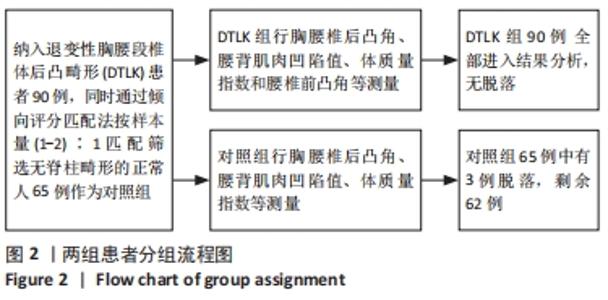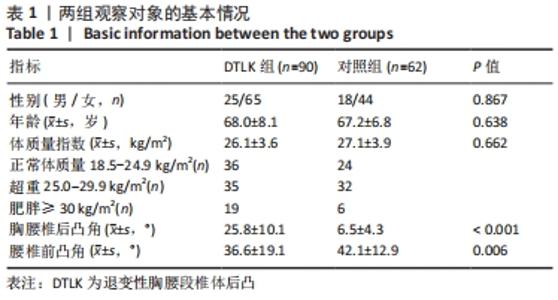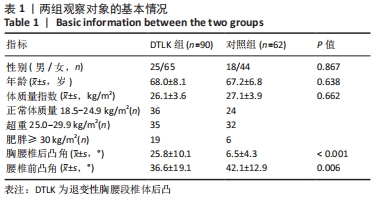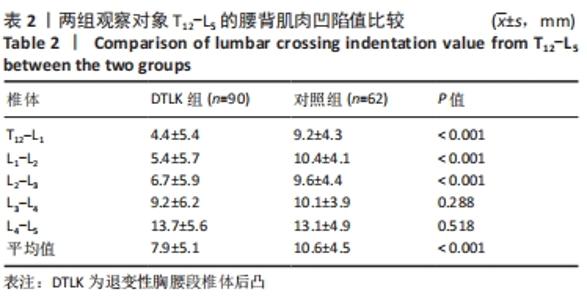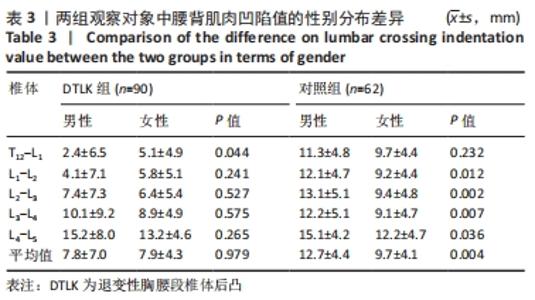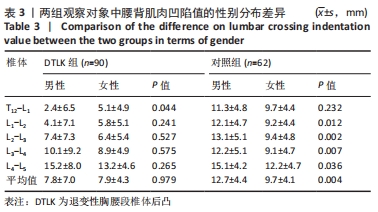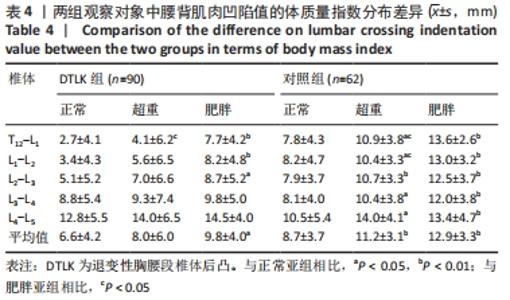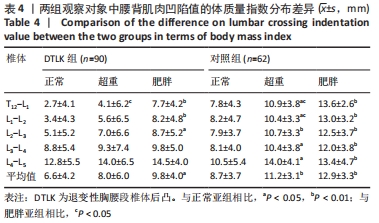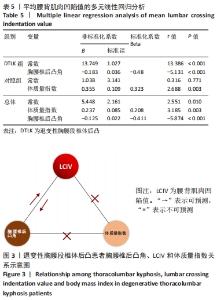[1] KIM WJ, KANG JW, KANG SI, et al. Factors affecting clinical results after corrective osteotomy for lumbar degenerative kyphosis. Asian Spine J. 2010;4(1):7-14.
[2] LEWIS SJ, KESHEN SG, KATO S, et al. Risk Factors for Postoperative Coronal Balance in Adult Spinal Deformity Surgery. Global Spine J. 2018;8(7):690-697.
[3] YAGI M, HOSOGANE N, WATANABE K, et al. The paravertebral muscle and psoas for the maintenance of global spinal alignment in patient with degenerative lumbar scoliosis. Spine J. 2016;16(4):451-458.
[4] BANNO T, YAMATO Y, HASEGAWA T, et al. Assessment of the Cross-Sectional Areas of the Psoas Major and Multifidus Muscles in Patients With Adult Spinal Deformity: A Case-Control Study. Clin Spine Surg. 2017;30(7):E968-E973.
[5] KALICHMAN L, HODGES P, LI L, et al. Changes in paraspinal muscles and their association with low back pain and spinal degeneration: CT study. Eur Spine J. 2010;19(7):1136-1144.
[6] JUN HS, KIM JH, AHN JH, et al. The Effect of Lumbar Spinal Muscle on Spinal Sagittal Alignment: Evaluating Muscle Quantity and Quality. Neurosurgery. 2016;79(6):847-855.
[7] BANNO T, ARIMA H, HASEGAWA T, et al. The Effect of Paravertebral Muscle on the Maintenance of Upright Posture in Patients With Adult Spinal Deformity. Spine Deform. 2019;7(1):125-131.
[8] TAKAYAMA K, KITA T, NAKAMURA H, et al. New Predictive Index for Lumbar Paraspinal Muscle Degeneration Associated With Aging. Spine (Phila Pa 1976). 2016;41(2):E84-E90.
[9] HICKS GE, SIMONSICK EM, HARRIS TB, et al. Cross-sectional associations between trunk muscle composition, back pain, and physical function in the health, aging and body composition study. J Gerontol A Biol Sci Med Sci. 2005;60(7):882-887.
[10] LIU CJ, ZHU ZQ, WANG KF, et al. Radiological Analysis of Thoracolumbar Junctional Degenerative Kyphosis in Patients with Lumbar Degenerative Kyphosis. Chin Med J (Engl). 2017;130(21):2535-2540.
[11] WANG C, CHANG H, GAO X, et al. Risk factors of degenerative lumbar scoliosis in patients with lumbar spinal canal stenosis. Medicine (Baltimore). 2019;98(38):e17177.
[12] 龚克,胡学昱,凃志鹏,等.影像学正常人群腰椎椎间高度指数、椎间角度及腰椎前凸角度的研究分析[J]. 生物骨科材料与临床研究,2018,15(2):19-24.
[13] CRUZ-JENTOFT AJ, LANDI F, SCHNEIDER SM, et al. Prevalence of and interventions for sarcopenia in ageing adults: a systematic review. Report of the International Sarcopenia Initiative (EWGSOP and IWGS). Age Ageing. 2014;43(6):748-759.
[14] SHAFAQ N, SUZUKI A, MATSUMURA A, et al. Asymmetric degeneration of paravertebral muscles in patients with degenerative lumbar scoliosis. Spine (Phila Pa 1976). 2012;37(16):1398-1406.
[15] MANNION AF, MEIER M, GROB D, et al. Paraspinal muscle fibre type alterations associated with scoliosis: an old problem revisited with new evidence. Eur Spine J. 1998;7(4):289-293.
[16] PATEL EA, PERLOFF MD. Radicular Pain Syndromes: Cervical, Lumbar, and Spinal Stenosis. Semin Neurol. 2018;38(6):634-639.
[17] KITAB S, HABBOUB G, ABDULKAREEM SB, et al. Redefining lumbar spinal stenosis as a developmental syndrome: does age matter. J Neurosurg Spine. 2019;31(3):357-365.
[18] WEI Y, TIAN W, ZHANG GL, et al. Thoracolumbar kyphosis is associated with compressive vertebral fracture in postmenopausal women. Osteoporos Int. 2017;28(6):1925-1929.
[19] CHARLES YP, NTILIKINA Y. Scoliosis surgery in adulthood: what challenges for what outcome. Ann Transl Med. 2020;8(2):34.
[20] HWANG CJ, LENKE LG, KELLY MP, et al. Minimum five-year follow-up of posterior-only pedicle screw constructs for thoracic and thoracolumbar kyphosis. Eur Spine J. 2019;28(11):2609-2618.
[21] LEE KY, LEE JH, KANG KC, et al. Spino-Pelvic Thresholds for Prevention of Proximal Junctional Kyphosis Following Combined Anterior Column Realignment and Short Posterior Spinal Fusion in Degenerative Lumbar Kyphosis. Orthop Surg. 2020;12(6):1674-1684.
[22] DIEBO BG, VARGHESE JJ, LAFAGE R, et al. Sagittal alignment of the spine: What do you need to know? Clin Neurol Neurosurg. 2015;139: 295-301.
[23] HIYAMA A, KATOH H, SAKAI D, et al. The correlation analysis between sagittal alignment and cross-sectional area of paraspinal muscle in patients with lumbar spinal stenosis and degenerative spondylolisthesis. BMC Musculoskelet Disord. 2019;20(1):352-360.
[24] HONGO M, MIYAKOSHI N, SHIMADA Y, et al. Association of spinal curve deformity and back extensor strength in elderly women with osteoporosis in Japan and the United States. Osteoporos Int. 2012; 23(3):1029-1034.
[25] TAKEMITSU Y, HARADA Y, IWAHARA T, et al. Lumbar degenerative kyphosis. Clinical, radiological and epidemiological studies. Spine (Phila Pa 1976). 1988;13(11):1317-1326.
[26] PISHNAMAZ M, SCHOLZ M, TROBISCH PD, et al. Posttraumatic deformity of the thoracolumbar spine. Unfallchirurg. 2020;123(2): 143-154.
[27] YUKAWA Y, KATO F, SUDA K, et al. Normative data for parameters of sagittal spinal alignment in healthy subjects: an analysis of gender specific differences and changes with aging in 626 asymptomatic individuals. Eur Spine J. 2018;27(2):426-432.
[28] CHAMNEY PW, WABEL P, MOISSL UM, et al. A whole-body model to distinguish excess fluid from the hydration of major body tissues. Am J Clin Nutr. 2007;85(1):80-89.
[29] BERVEN S, WADHWA R. Sagittal Alignment of the Lumbar Spine. Neurosurg Clin N Am. 2018;29(3):331-339.
|
